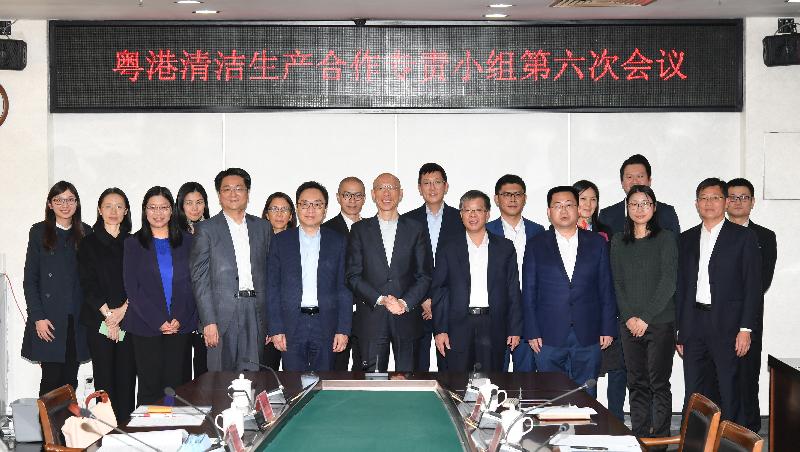Hong Kong’s external direct investment (DI) statistics for 2018 were released today (December 12) by the Census and Statistics Department (C&SD).
Stocks of DI
At the end of 2018, the total stock of Hong Kong’s inward DI (i.e. the position of Hong Kong’s DI liabilities) increased by 1.0% over a year earlier to $17,120.7 billion. Its ratio to the Gross Domestic Product (GDP) stood at 602% in 2018. The increase in 2018 was mainly attributable to the positive DI inflow to Hong Kong during the year.
As for the total stock of Hong Kong’s outward DI (i.e. the position of Hong Kong’s DI assets), it increased by 0.9% over a year earlier to $16,071.3 billion. Its ratio to GDP was 565% in 2018. The increase in 2018 was mainly attributable to the positive outflow of DI to enterprises outside Hong Kong during the year.
Analysed by immediate source of investment, the British Virgin Islands (BVI) and the mainland of China (the Mainland) were the two largest sources for Hong Kong’s inward DI, with a share of 31.9% and 26.8% respectively at end-2018. Analysed by major economic activity of Hong Kong enterprise groups (HKEGs) which had received inward DI, those engaged in investment and holding, real estate, professional and business services took up the largest share, at 69.4% at end-2018. This was followed by banking, at 11.8%; and import/export, wholesale and retail trades, at 9.0%.
Analysed by immediate destination of investment, the Mainland and the BVI were the two largest destinations for Hong Kong’s outward DI, with a share of 40.6% and 33.8% respectively at end-2018. Analysed by major economic activity of HKEGs which had made outward DI, those engaged in investment and holding, real estate, professional and business services took up the largest share, at 80.4% at end-2018. This was followed by import/export, wholesale and retail trades, at 7.4%; and banking, at 2.8%.
Flows of DI
In 2018, total DI inflow amounted to $760.5 billion, smaller than that of $979.6 billion in 2017. On the other hand, total DI outflow in 2018 amounted to $587.7 billion, smaller than that of $792.7 billion in 2017. Taking the inflow and outflow together, a net DI inflow of $172.8 billion was recorded in 2018.
Analysed by immediate source of investment, the Mainland was the major source of Hong Kong’s DI inflow in 2018, amounting to $296.6 billion. The BVI came next, at $281.1 billion. Analysed by major economic activity of HKEGs which had received DI inflow, those engaged in investment and holding, real estate, professional and business services attracted the largest amount in 2018, at $479.7 billion.
Analysed by immediate destination of investment, the Mainland accounted for a predominant share of Hong Kong’s DI outflow in 2018, at $397.0 billion. The BVI came next, at $199.3 billion. Analysed by major economic activity of HKEGs which had made DI outflow, those engaged in investment and holding, real estate, professional and business services took up the largest amount, at $472.6 billion.
Commentary
A Government spokesman said that the stocks of overall inward and outward DI continued to rise in 2018 and reached $17,120.7 billion and $16,071.3 billion (602% and 565% of GDP) respectively at end-2018, notwithstanding the increasingly uncertain global economic and financial environment in the latter part of the year. According to the World Investment Report 2019 issued by the United Nations Conference on Trade and Development, Hong Kong is the world’s second largest destination for inward DI and fourth largest source of outward DI. The vast stock of external DI in Hong Kong reveals our status as an international centre for finance and commerce, as well as our attractiveness as a base for multinational corporations to manage their investment and business in the international arena.
The spokesman noted that Hong Kong’s DI covers a large geographical spread and a wide range of economic activities, with the Mainland featured prominently both as a source and as a destination. To further Hong Kong’s development as an international financial and business centre, the Government will strive to enhance our established competitive advantages, explore new areas of strength, and capitalise on the vast opportunities arising from the development of the Guangdong-Hong Kong-Macao Greater Bay Area and the national Belt and Road Initiative.
Further information
DI represents external investment in which an investor of an economy acquires a lasting interest and a significant degree of influence or an effective voice in the management of an enterprise located in another economy. For statistical purpose, an effective voice is taken as being equivalent to a holding of 10% or more of the voting power in an enterprise.
According to the international statistical standards, the total stocks and flows of DI presented above are compiled based on the “asset/liability principle”, while detailed DI figures analysed by country/territory and by major economic activity of HKEGs are based on the “directional principle”. Owing to the adoption of different presentation principles, the total stocks and flows of DI are different from the sums of the detailed DI figures by country/territory or by major economic activity of HKEGs. However, the overall direct investment balance compiled from figures based on these two presentation principles respectively is the same.
Tables 1 and 2 show the positions (i.e. stocks) and flows of inward DI in Hong Kong by selected major investor country/territory and by major economic activity of HKEGs respectively for 2017 and 2018. Similar statistics on outward DI from Hong Kong are presented in Tables 3 and 4.
More detailed statistics for 2018 are given in the report External Direct Investment Statistics of Hong Kong 2018. Users can download this publication free of charge at the website of the C&SD (www.censtatd.gov.hk/hkstat/sub/sp260.jsp?productCode=B1040003).
Enquiries about the DI statistics may be directed to the Balance of Payments Branch (2) of the C&SD at 3903 7017. read more



